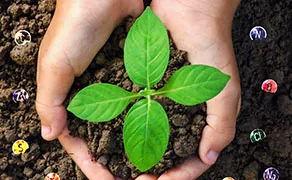The Soil A primary resource for food production and the most important tool for every farmer. Successful farming depends on the quality of soil, which provides water and essential nutrients to crops. Rich and healthy soil, combined with the appropriate amount of water and sunlight can significantly contribute to a successful farming season and meeting yield quotas.
Proper soil management protects and enhances soil performance. It also reduces input costs, prevents pollution, and improves crop quality. Before planting, the soil should be in the best physical condition for the crop, to encourage rapid and successful root growth. All crops have different soil requirements, but there are a few common practices that could encourage healthy soil biology.
Proper Tillage: Preparing The Soil For Growing Crops
Soil tillage is the first and most important activity. It directly affects the final yield and that’s why it needs to be carried out properly. Proper tillage practices can significantly improve the quality and crop yields. The process of preparing the soil for growing crops starts with a soil tillage plan.

During the crop production process, farmers perform several types of soil tillage. These are as follows:
Undermining or mole drainage — A poorly used tillage practice; mainly to solve standing water and soil porosity problem
Plowing — Classified into very shallow, shallow, and pre-sowing plowing, this practice is the base of soil tillage; it improves soil microbiological activity, destroys already emerged weeds and prevents losses of moisture from the soil by evaporation
Disking — Plays a huge role in preparing the soil for sowing; disking breaks up clods and surface crust, thereby improving soil granulation and surface uniformity
Harrowing — Creates a crumbly layer for planting thus protecting the soil surface from rapid drying and enhancing plant nutrient availability
Rolling — The final soil tillage practice to create a smooth and firm seedbed and press the seeds into the soil for faster germination


